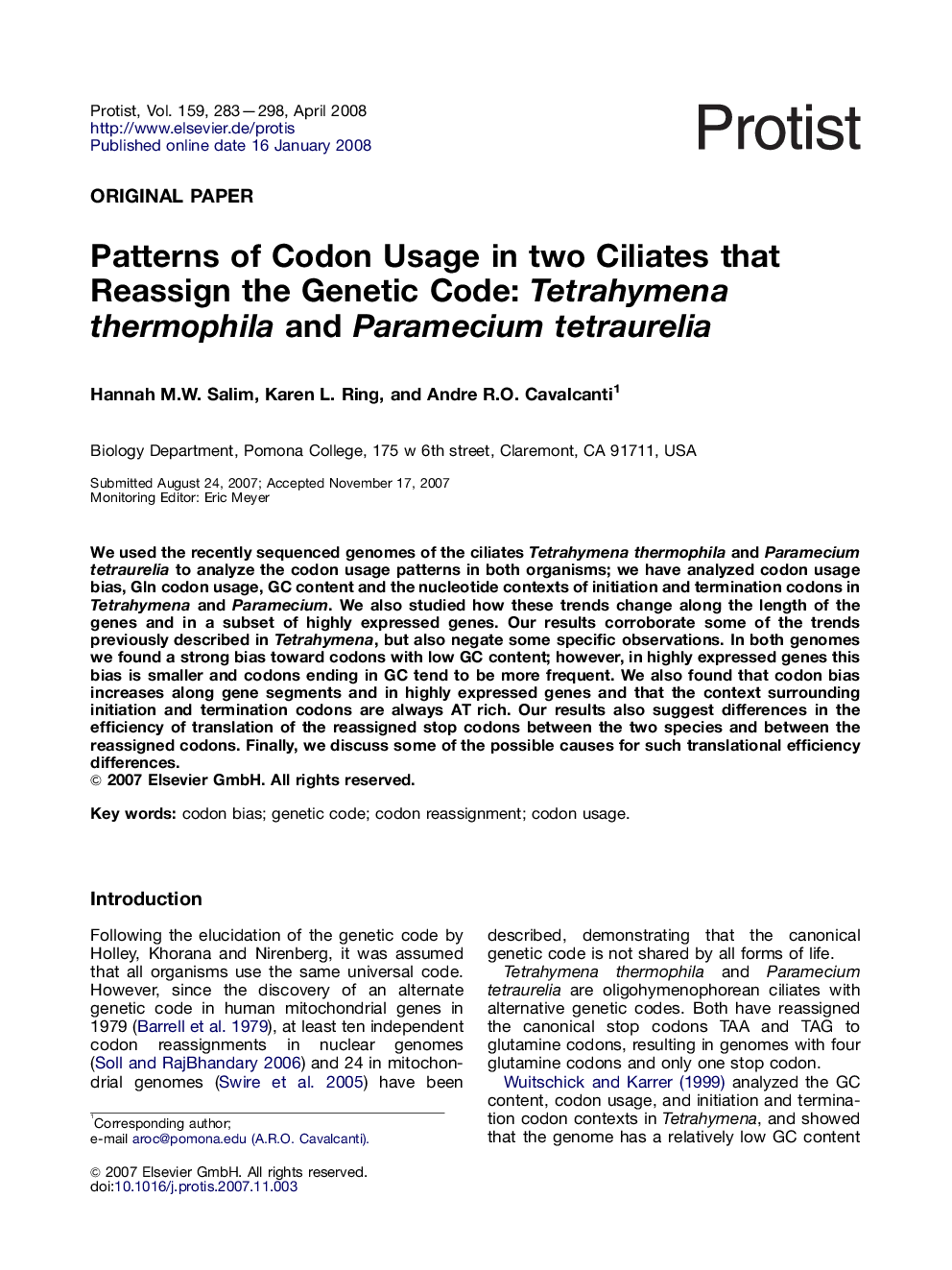| Article ID | Journal | Published Year | Pages | File Type |
|---|---|---|---|---|
| 2061885 | Protist | 2008 | 16 Pages |
We used the recently sequenced genomes of the ciliates Tetrahymena thermophila and Paramecium tetraurelia to analyze the codon usage patterns in both organisms; we have analyzed codon usage bias, Gln codon usage, GC content and the nucleotide contexts of initiation and termination codons in Tetrahymena and Paramecium. We also studied how these trends change along the length of the genes and in a subset of highly expressed genes. Our results corroborate some of the trends previously described in Tetrahymena, but also negate some specific observations. In both genomes we found a strong bias toward codons with low GC content; however, in highly expressed genes this bias is smaller and codons ending in GC tend to be more frequent. We also found that codon bias increases along gene segments and in highly expressed genes and that the context surrounding initiation and termination codons are always AT rich. Our results also suggest differences in the efficiency of translation of the reassigned stop codons between the two species and between the reassigned codons. Finally, we discuss some of the possible causes for such translational efficiency differences.
